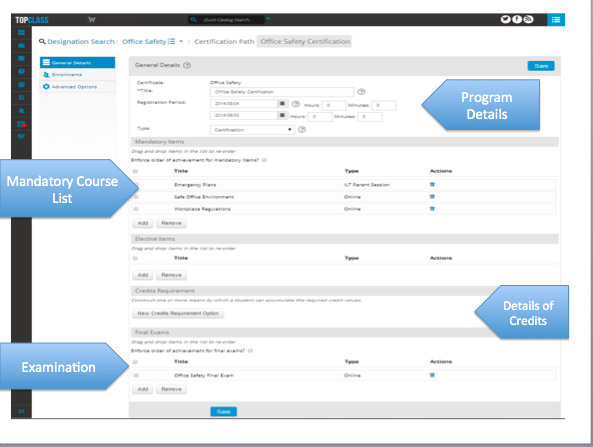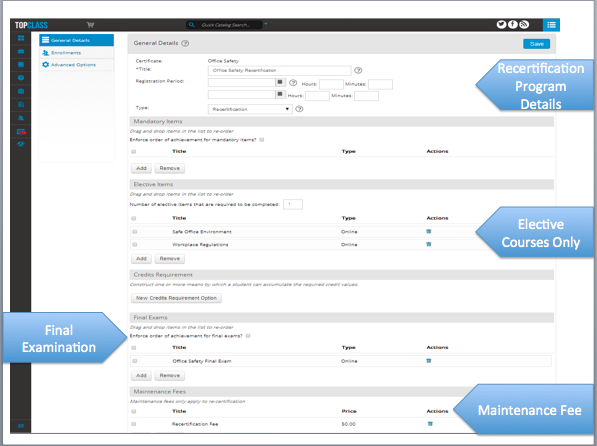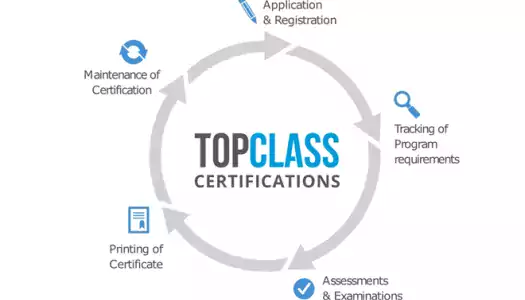Setting up and offering a certification program is a fairly complex task for most organizations as the process involves several elements. Consideration needs to be given to many areas including: courses and learning activities that need to be created, the set up and scoring of exams, the tracking of credits for activities completed, and overall training history.
As importantly, the pricing and sale of the programs needs to be determined in order to ensure the revenue side of things is taken care of as well!
With Certification Programs there is also the time consuming task of managing learners or program designate registrations, the tracking of program requirements and prerequisites, the expiration and grace periods for each certificate, and also the issuing of the physical certificates to learners. Using a Learning Management System to manage this process won’t remove all the headaches, but it will certainly take away a lot of the hassle and will help simplify the process. In order to demonstrate this point here’s an example.
Safety Certification Example
An organization requires that all employees take a number of safety courses and receive a certification in safety practices on a yearly basis. The certification expires after 365 days and employees need to recertify each year in order to stay up to date. In this example, two online safety courses and one instructor-led session must be completed by all employees and a final exam on safety practices must be passed, with a passing score of 70%.
Setting up the Certification in the LMS
First, a certification rule is created within the LMS for the safety certificate to have a maintenance period of 365 days to ensure that employees must recertify every year. Then the certification path is created and it contains the two online safety courses, the ILT session and the final exam. Here’s an example of how this would look in the LMS:

Handling Recertification
A recertification path is then created within the LMS and once the employee’s certification has expired, the employee must recertify using the recertification path. This path can be created to only require that certain elements of the original certification need to be accomplished such as taking the same final exam as was in the original certification path and as long as the employee receive a passing mark of 70% or above they will be certified for another year.
The online safety courses can be added as optional elective items to the recertification path so that the employee can re-take the courses if the final exam was not passed. Once the employee has been refreshed on the safety procedures, the final exam can be retaked provided the employee has been allowed more than one attempt at it.
An example of how the recertification path would look in the LMS is below:

Managing the Fees
A maintenance fee can also be added to the recertification path and employees would have to pay each year when they wish to recertify.






